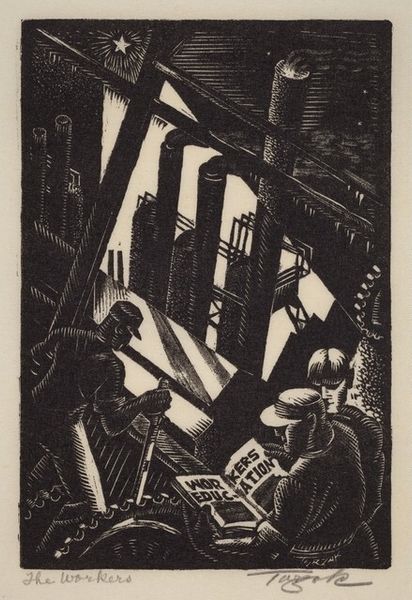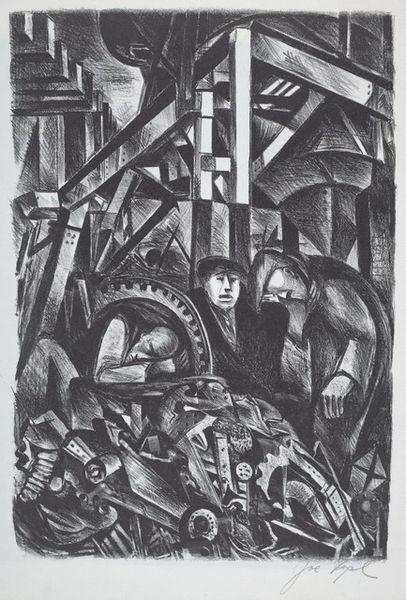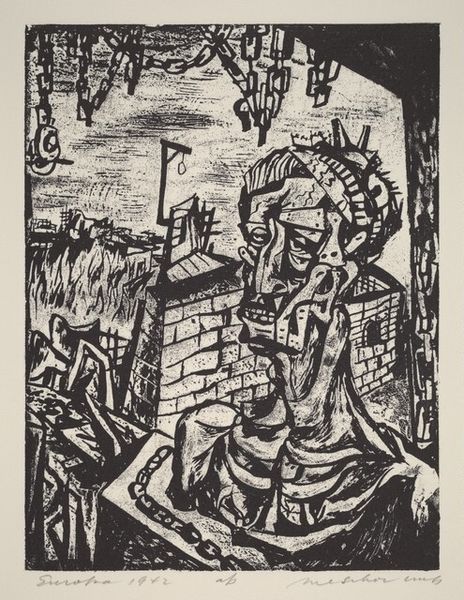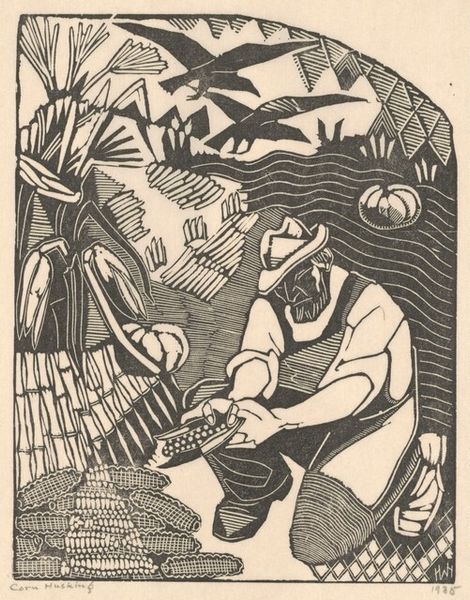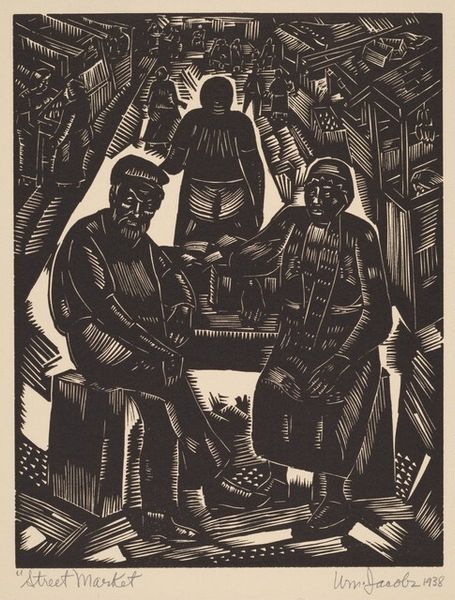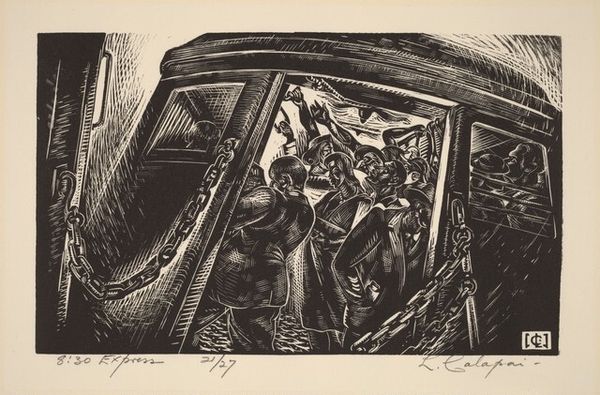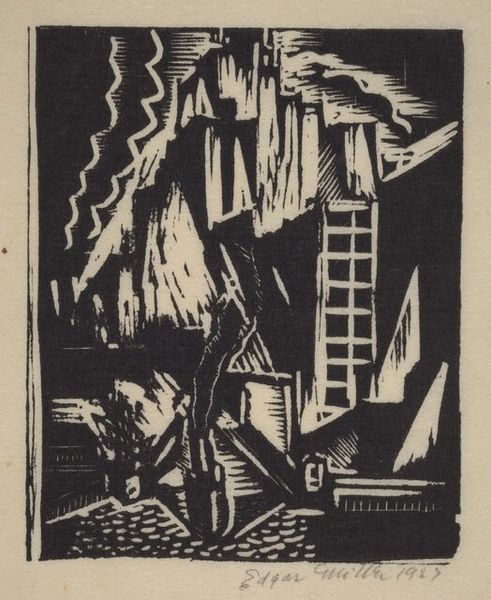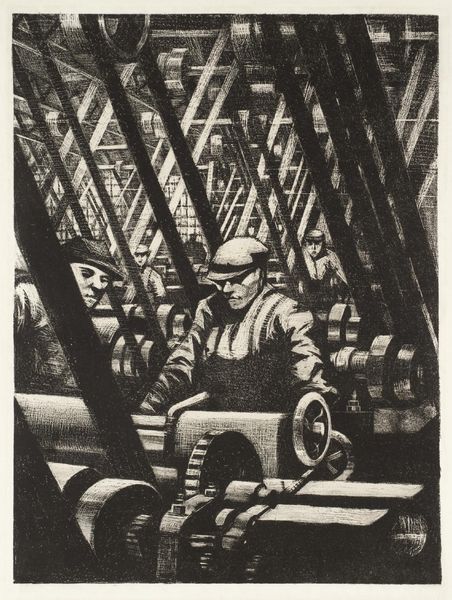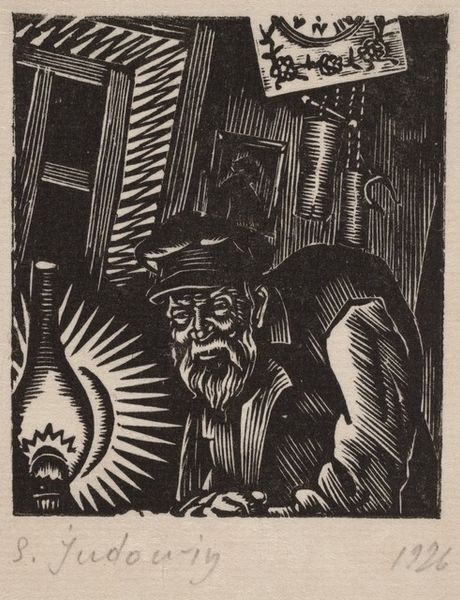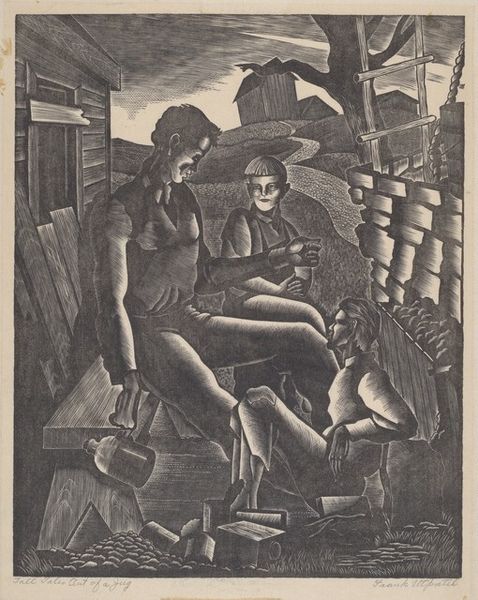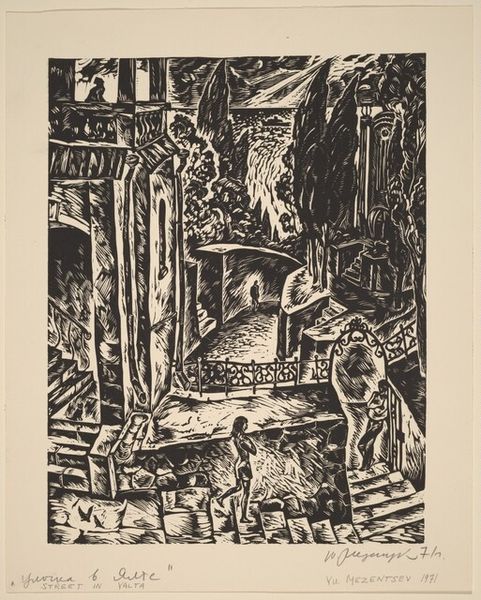
graphic-art, print, woodcut
#
graphic-art
# print
#
woodcut
#
russian-avant-garde
Copyright: National Gallery of Art: CC0 1.0
Curator: What a powerful piece. This is "2 Vignettes" by Solomon Borisovich Judovin, a woodcut print dating back to 1929. The stark contrasts create such a dramatic atmosphere. Editor: Yes, the deep blacks and sharp lines feel almost…claustrophobic. It's a very textured piece; I immediately think about the labor that goes into this rural scene. What can you tell me about the process? Curator: As a woodcut, Judovin would have painstakingly carved away areas of a wood block to create a relief design. Think of the precision involved, the strength required to manipulate those tools. And consider the historical context: the rise of printmaking as a means of mass communication, the democratization of art production... Editor: It speaks volumes about accessibility, doesn’t it? And looking closer, there are really two scenes competing for my attention. You've got this loaded horse cart ready to go somewhere with what looks like laborers overseeing the process and then there’s an inside shot of folks cooking. But these "vignettes" clearly intertwine: there’s an undeniable focus on these folks and what feels like an intense, and exhaustive daily life. I feel like there is such little regard paid for gender and age. They're all doing the most and just existing within the means of capitalistic society. It’s exhausting just looking at it, honestly. Curator: The contrast is also aesthetically compelling; these areas form almost abstract geometric shapes. But even beyond the printmaking itself, let’s also consider the material reality of the paper it is printed on. How was it produced? Who controlled those mills? It opens this artwork up to far more social and economic avenues of exploration. Editor: Absolutely. The intersectionality within this scene is unavoidable, between gendered labor, class dynamics, and probably ethnic identity, considering Judovin’s background. It asks us to consider how structures of power were materialized on everyday existence within the framework of post-revolution Soviet society, and challenges our assumptions around progress. Curator: That’s beautifully put. By considering this through intersectional lenses, and remembering its materiality, the artwork transforms from mere aesthetic object to social document and potentially a space for change and critical discussions. Editor: It really does. It challenges us to question whose narratives are missing and to re-evaluate what truly constitutes ‘progress’ and art and what that all means for society as we engage and challenge such art, and hopefully to create tangible, equity centered progress through this discussion.
Comments
No comments
Be the first to comment and join the conversation on the ultimate creative platform.
